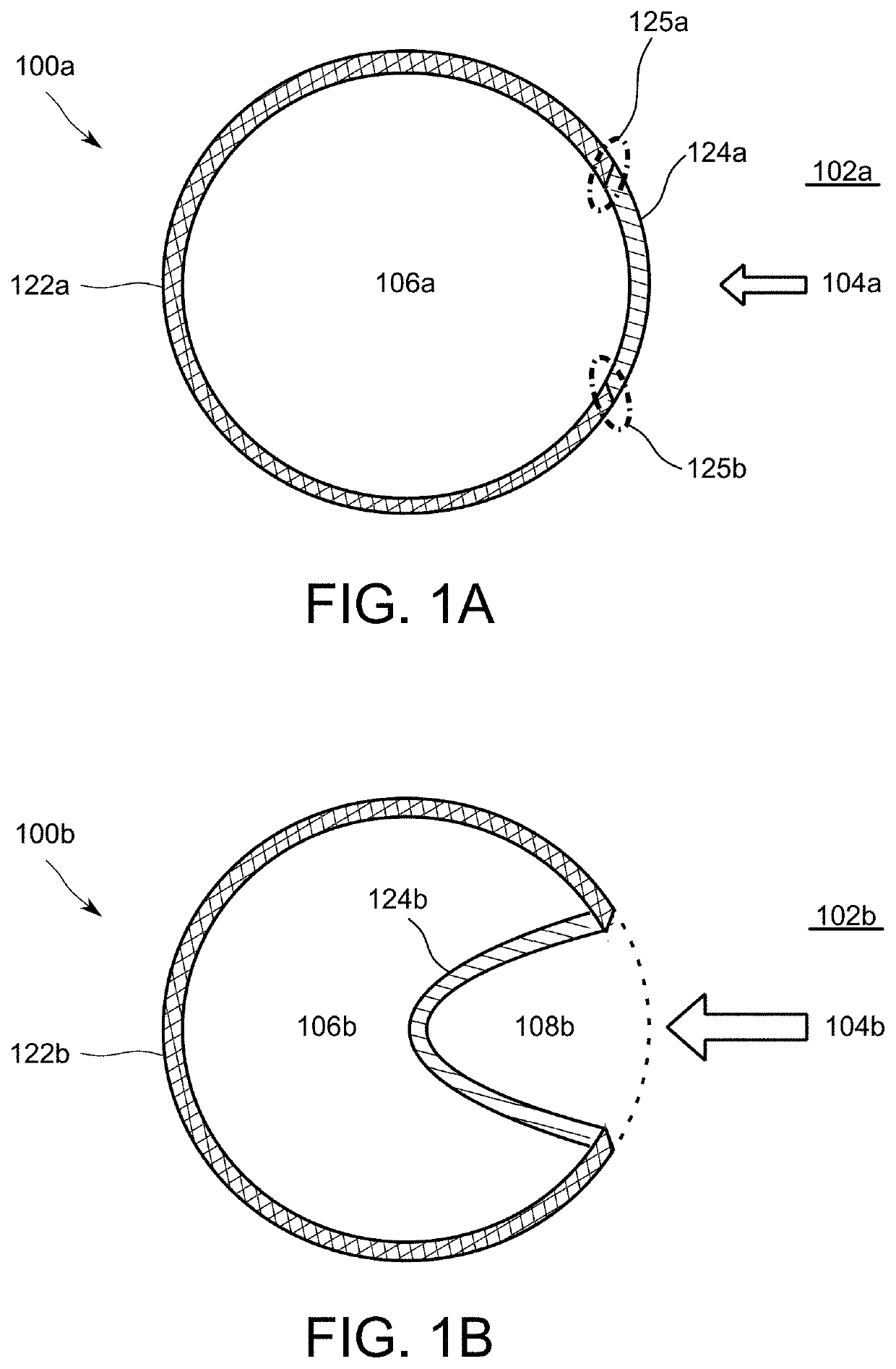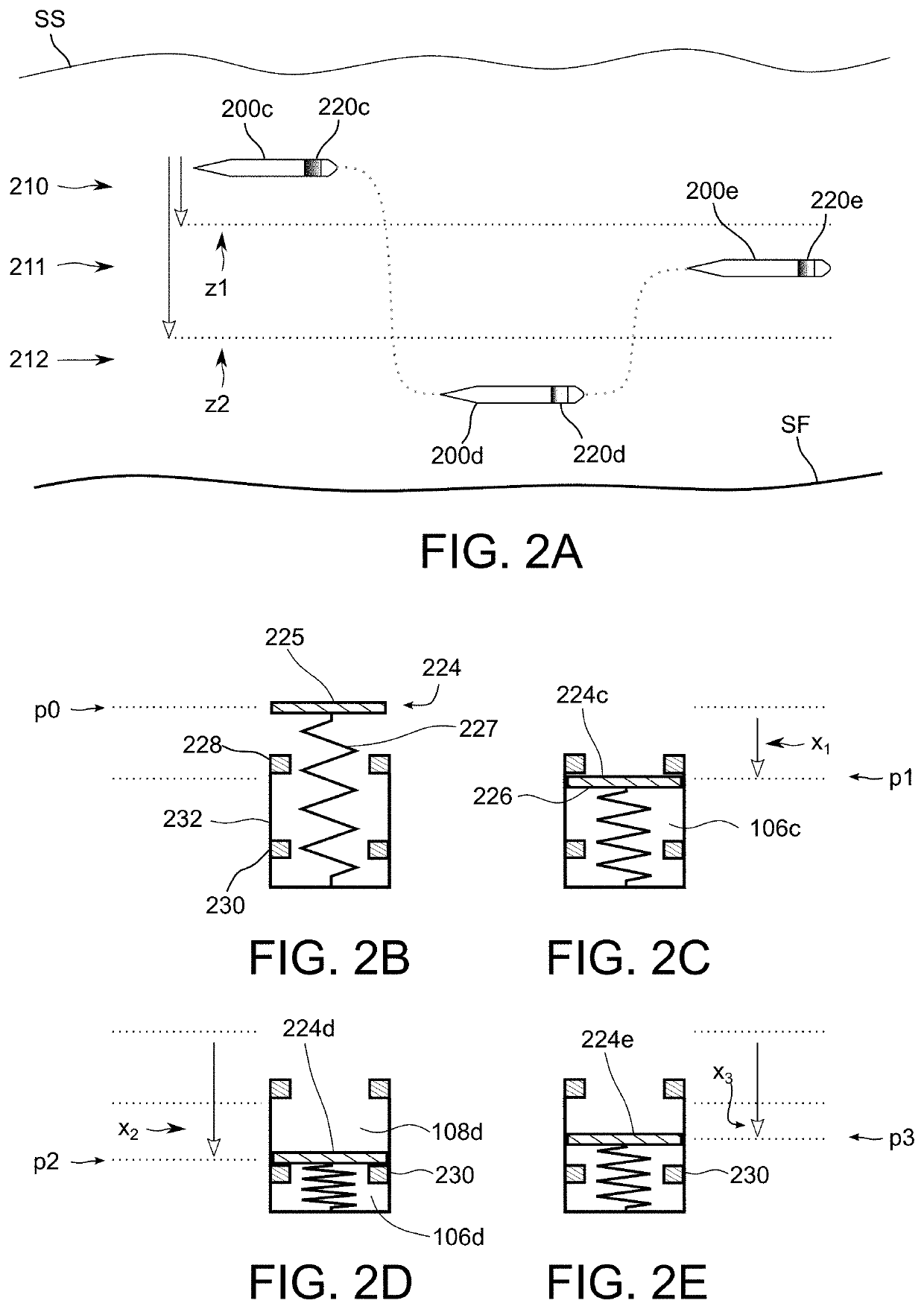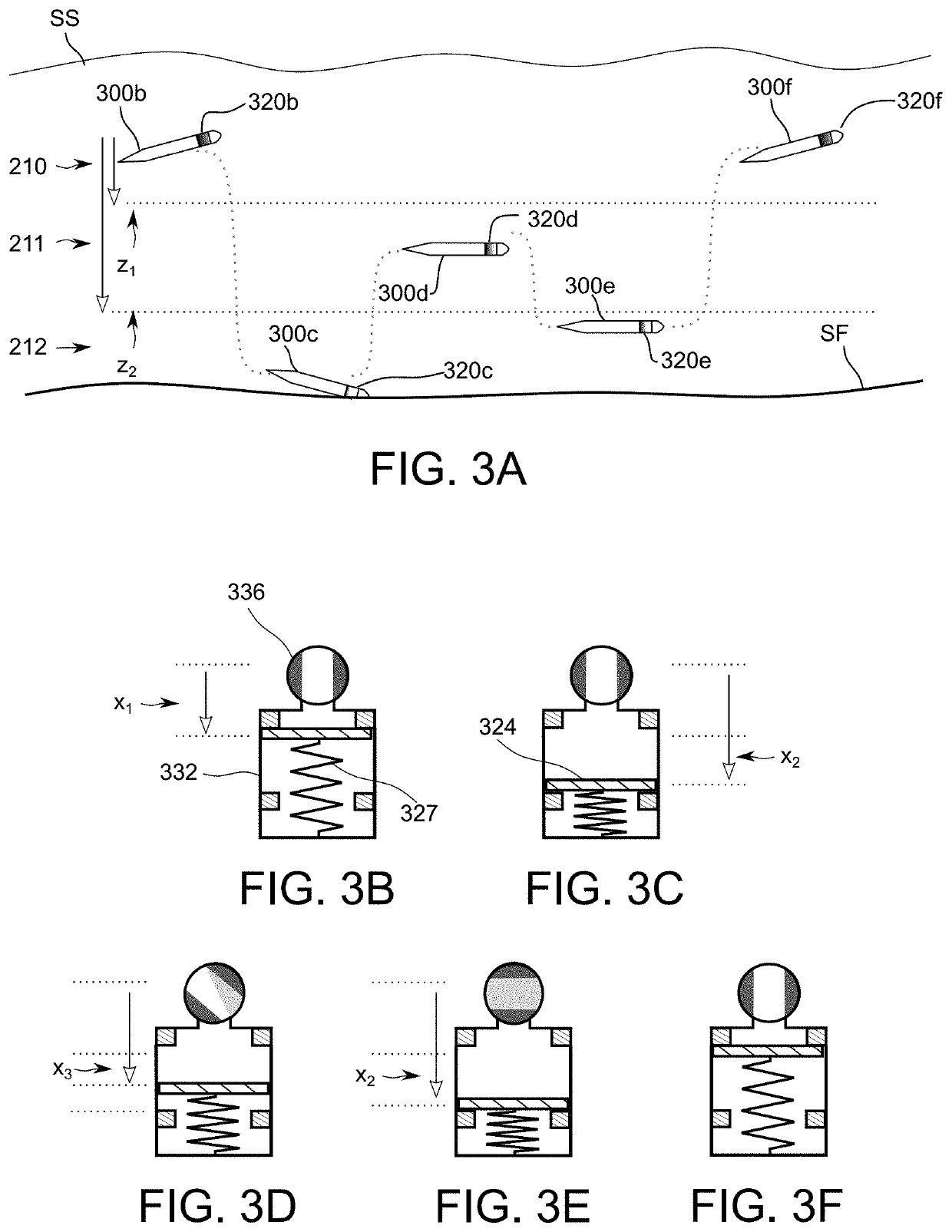Passive Ballast Device, System and Methods of Using Same
a technology of passive ballast and ballast device, which is applied in the field of ballast system, can solve the problems of increased drag, inability to adjust the ballast, and inability to operate autonomous underwater vehicles, etc., and achieve the effect of reducing vehicle size, complexity and power consumption
- Summary
- Abstract
- Description
- Claims
- Application Information
AI Technical Summary
Benefits of technology
Problems solved by technology
Method used
Image
Examples
example 1
[0184]One specific embodiment of the instant invention is described herein and illustrated in FIGS. 13A-13E. This embodiment of the present invention is referred to as the Auto Ballaster 1300, and the system is self-contained within a pressure housing 1322 reversibly attached to another vehicle, in this case a RAFOS float commercially available from Seascan. The Auto Ballaster may be reversibly connected to the RAFOS float by any commonly known attachment mechanism 1348, some of which are described in US Patent Application Pub. Nos. US 2018 / 0082166 by Kukulya et al. and US 2017 / 0332612 by Partan et al., incorporated by reference herein. One suitable attachment mechanism 1348 comprises a screw attachment to the RAFOS float burn-wire system.
[0185]The Auto Ballaster is a semi-passive ballast system, comprising the key components of a controller 1340, a depth sensor 1344, a chamber 1332 and integrated compensator, and a valve 1336 in fluid communication with an opening 1337, shown in FI...
example 2
[0193]Underwater Robotic vehicles are typically 2 to 5 times less compressible than seawater. This means they become more buoyant the deeper they go. Maintaining depth therefore requires expending energy. In principle it is possible to make a vehicle with an overall compressibility (bulk modulus) roughly that of a specific depth profile of a liquid (typically seawater). Such a compressible vehicle, if ballasted properly to be neutrally buoyant at the liquid surface, would require little to no energy to hold a depth. In common practice, vehicles are deliberately made to be either positively or negatively buoyant, depending on the use or mission. However, a compressibility-matched vehicle (e.g. a passive ballast system), would expend roughly the same energy to hold depth near the surface as it would at deep depths while maintaining the same ballast condition.
[0194]Seawater and other complex liquid bodies have variable density throughout a vertical depth profile. And density varies not...
example 3
Passive Variable Ballast System
[0201]Another specific embodiment of the instant invention is described herein and illustrated in FIGS. 14A-14C. This embodiment of the present invention is referred to as Passive Variable Ballast (PVB) System 1400a. The PVB is a modification of the passive ballast system described above, comprising a compensator 224 (e.g. a piston), a chamber 232, at least one stop 230, and a working medium WM (e.g. a compressible gas) disposed in, and in almost all cases, filling (i.e. expanding to fill) chamber 232. The chamber 232 is further divided into at least two sections, divided by the stops 230 into a fixed section FS and a variable section VS. Fixed section FS and variable section VS sections are separated physically by stops 230 insomuch as the compensator 224 may not move into the fixed section FS section. The two sections are connected such that the working medium WM inside chamber 232 may expand into both sections. As disclosed elsewhere herein, compens...
PUM
 Login to View More
Login to View More Abstract
Description
Claims
Application Information
 Login to View More
Login to View More - R&D
- Intellectual Property
- Life Sciences
- Materials
- Tech Scout
- Unparalleled Data Quality
- Higher Quality Content
- 60% Fewer Hallucinations
Browse by: Latest US Patents, China's latest patents, Technical Efficacy Thesaurus, Application Domain, Technology Topic, Popular Technical Reports.
© 2025 PatSnap. All rights reserved.Legal|Privacy policy|Modern Slavery Act Transparency Statement|Sitemap|About US| Contact US: help@patsnap.com



